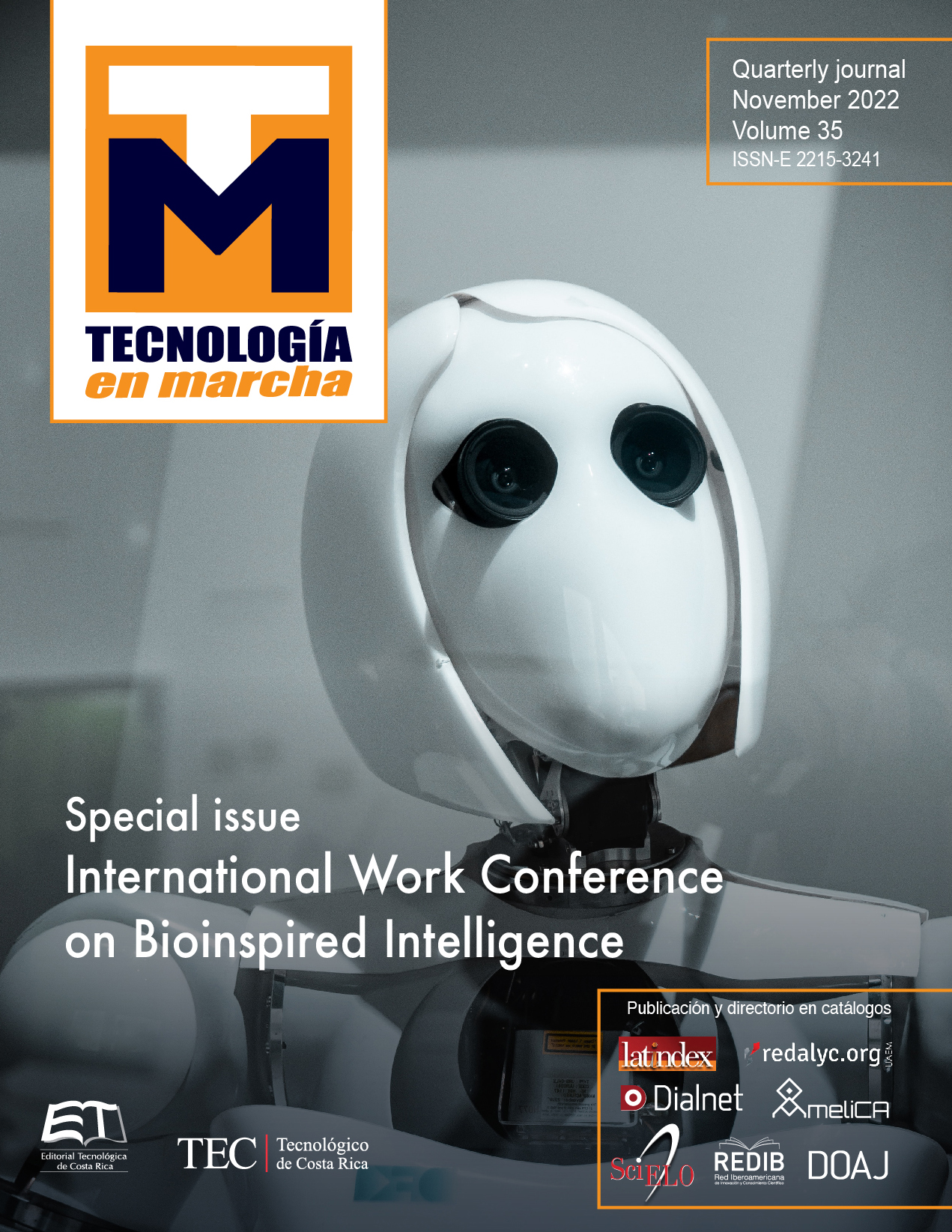An experimental study on footsteps sound recognition as biometric under noisy conditions
Main Article Content
Abstract
The experimentation of footsteps as a biometric has a short history of about two decades. The process of identification of a person is based on the study of footstep signals captured when walking over a sensing area, and the registering of sounds, pressure, vibration, or a combination of these measures. Application of this biometric can emerge in security systems, that identify persons who enter or leave a space, and in providing help to elderly and disabled persons. In this paper, we are focused in the exploration of pure audio signals of footsteps and the robustness of a person’s classification under noisy conditions. We present a comparison between four wellknown classifiers and three kinds of noise, applied at different signal to noise ratio. Results are reported in terms of accuracy in the detection an users, showing different levels of sensibility according to the kind and level of noise.
Article Details

This work is licensed under a Creative Commons Attribution-NonCommercial-NoDerivatives 4.0 International License.
Los autores conservan los derechos de autor y ceden a la revista el derecho de la primera publicación y pueda editarlo, reproducirlo, distribuirlo, exhibirlo y comunicarlo en el país y en el extranjero mediante medios impresos y electrónicos. Asimismo, asumen el compromiso sobre cualquier litigio o reclamación relacionada con derechos de propiedad intelectual, exonerando de responsabilidad a la Editorial Tecnológica de Costa Rica. Además, se establece que los autores pueden realizar otros acuerdos contractuales independientes y adicionales para la distribución no exclusiva de la versión del artículo publicado en esta revista (p. ej., incluirlo en un repositorio institucional o publicarlo en un libro) siempre que indiquen claramente que el trabajo se publicó por primera vez en esta revista.
References
Rodríguez, Rubén Vera, et al. “Footstep recognition for a smart home environment.” International Journal of Smart Home 2.2 (2008): 95-110.
Pedotti, Antonio. “Simple equipment used in clinical practice for evaluation of locomotion.” IEEE Transactions on Biomedical Engineering 5 (1977): 456-461.
Addlesee, Michael D., et al. “The ORL active floor [sensor system].” IEEE Personal Communications 4.5 (1997): 35-41.
Rodriguez, Ruben Vera, Nicholas WD Evans, and John SD Mason. “Footstep recognition. ”Encyclopedia of Biometrics; Li, SZ, Jain, AK, Eds.; Springer: Boston, MA, USA (2015): 693-700.
Rodríguez, Rubén Vera, et al. “An experimental study on the feasibility of footsteps as a biometric.” 2007 15th European Signal Processing Conference. IEEE, 2007.
Vera-Rodríguez, Rubén, et al. “Analysis of time domain information for footstep recognition.” International Symposium on Visual Computing. Springer, Berlin, Heidelberg, 2010.
Mason, James Eric, Issa Traoré, and Isaac Woungang. “Gait Biometric Recognition.” Machine Learning Techniques for Gait Biometric Recognition. Springer, Cham, 2016. 9-35.
Connor, Patrick, and Arun Ross. “Biometric recognition by gait: A survey of modalities and features.” Computer Vision and Image Understanding 167 (2018): 1-27.
Vera-Rodríguez, Rubén, et al. “A large scale footstep database for biometric studies created using crossbiometrics for labelling.” 2008 10th International Conference on Control, Automation, Robotics and Vision. IEEE, 2008.
Shoji, Yasuhiro, Takashi Takasuka, and Hiroshi Yasukawa. “Personal identification using footstep detection.” Proceedings of 2004 International Symposium on Intel- ligent Signal Processing and Communication Systems, 2004. ISPACS 2004. IEEE, 2004.
Hori, Yuki, Takahiro Ando, and Akira Fukuda. “Personal Identification Methods Using Footsteps of One Step.” 2020 International Conference on Artificial Intelligence in Information and Communication (ICAIIC). IEEE, 2020.
Giannakopoulos, Theodoros. “pyaudioanalysis: An open-source python library for audio signal analysis.” PloS one 10.12 (2015): e0144610.

